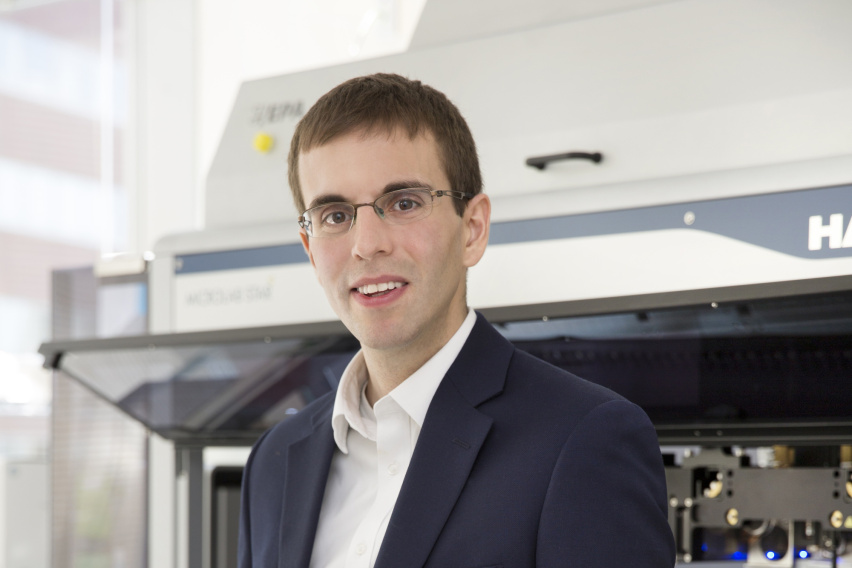MIT News
February 24, 2014
MIT engineers led by KI faculty member Sangeeta Bhatia have developed a simple, cheap, paper-strip urine test that can reveal the presence of cancer within minutes. The paper-based diagnostic, described in the Proceedings of the National Academy of Sciences, can be performed on unprocessed samples without specialized equipment and can be modified to detect different types or stages of disease. This point-of-care, image-free test is a big leap forward in bringing cancer detection to settings with little medical infrastructure. In countries where more advanced diagnostics are available, it could provide an inexpensive alternative to imaging.
The technology relies on nanoparticles that interact with tumor proteins called proteases, each of which releases hundreds of biomarkers detectable in a patient’s urine. In the original version of the technology, these biomarkers were detected using a highly specialized instrument called a mass spectrometer. Now, applying the same technology used in pregnancy tests, the researchers have adapted the particles so they can be analyzed on paper. The Bhatia Laboratory recently won a grant from MIT’s Deshpande Center for Technological Innovation to develop a business plan for a startup to commercialize the technology and perform clinical trials to bring this diagnostic to patients.
The research has been profiled in media outlets including The Boston Globe, The Huffington Post, Boston Magazine, The Times of India, and The Indian Express, and was funded by a National Science Foundation Graduate Research Fellowship, a Mazumdar-Shaw International Oncology Fellowship, the Ruth L. Kirschstein National Research Service Award from the National Institutes of Health, the Burroughs Wellcome Fund, the National Cancer Institute, and the Howard Hughes Medical Institute.
